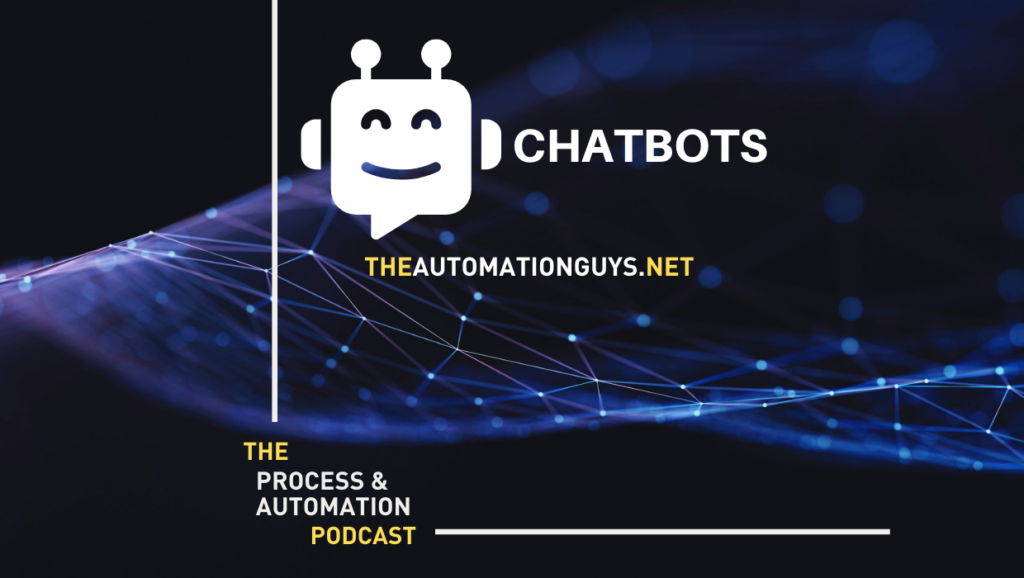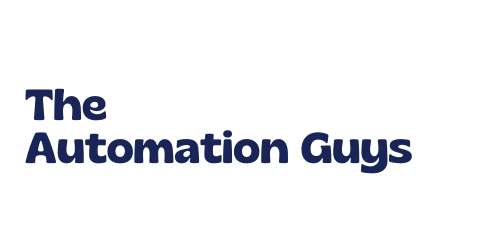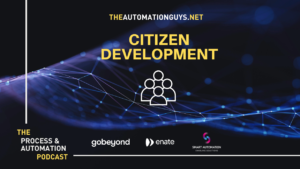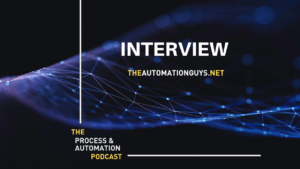Blog

Using Chatbots for Customer Onboarding
In this episode Arno and Sascha talk about chatbots and share 5 steps to engage customers with personalized interactions with the help of AI-powered chatbots.
Share This Post
Do you have any questions? Would you like to give us feedback? Are you interested in workshops on the topic of automation? Are you an expert in the field of automation and would like to be on the podcast?
LinkedIn Arno: https://bit.ly/3aABArd
LinkedIn Sascha: https://bit.ly/36Jd31T
Velocity-IT: https://www.velocity-it.com/about-us/
convedo Group: https://www.convedo.com/about-us
Episode Transcript
Many institutions are usually scared by lots of regulations and compliance. And in most cases, they think it’s an impossible dream to improve the actual customer onboarding process. If you like to learn more on how to engage customers with personalized interactions with an AI powered chatbot join us today.
Hello, and welcome to another episode of the process and automation podcast with the automation guys. With me here today is also Oh, hello, Arno. Hey, Sascha. Great. Good to have you here as well. In today’s episode, we plan to cover how organizations can use chatbots to automate their business processes for customer onboarding.
Yes, that’s right. So what we’re going to cover today is a couple of steps that you could basically use to frictionlessly onboard, you know, new customers using Check, check or chatbot technology.
So five steps. And so I think the first step we can dive in straight away is I think switching from paper, really, so I think customer onboarding is usually very customer paper heavy. I remember that was signing up for some accounts also was bank. So this is customer onboarding as well. It’s paper heavy.
And yeah, I think now doing the transitions from paper into digital engagement. I think that that will be the first step, that is a couple of steps we want to cover. And what we want to focus on Sasha is, is really, like you said, to enable this hassle-free customer onboarding journey. And, you know, the first step is really, to move beyond the speed of paper into this world of opportunity, using digital and conversational engagement. And, of course, by conversational engagement, that’s what we mean by deploying chatbots. And, you know, for a very long period of times, companies have struggled to improve their paper-based processes. And of course, we’ve seen a very big acceleration in digital transformation. And you know, what, sort of pandemic started and increase the adoption of new technologies like conversational AI, natural language processing, you know, and this enabled us to really change the business landscape and the way we engage with our customers. And of course, you know, at this present time, you know, we need to have responsive digital journeys with our customers, and that will help us to boost customer engagements, regardless of their location, what channel they use, or what channel they might engage with us. And, of course, this helps us to generate new revenue streams. And also for a lot of organizations are part of their customer acquisition strategies, onboarding programs must now you know, adapt to customers, evolving expectations, and also all of their operation realities out there. So that we, we our first interaction with that potential customer is really good, it’s hassle free, it’s to that point. So really, our first step Yes, actually, is to move from this sort of speed of paper really into this, this digital conversational engagement channel.
That’s very good. So yeah, moving to the next point is more about Okay, this sounds really fantastic, how do how do we get started? And so, the next step will be how, how we can use a no code approach for agile development of a chatbot technology. So I think this is this is very important to get these things out very, very quickly and without too much infrastructure burden. So your customer so let organizations them, like, like banks and retail ecommerce. So as everyone who’s dealing with customers on a daily basis, you’re getting the most from, from the, from this kind of technology by ensuring an exceptional user experience, I think, nevertheless, the customer expectations are constantly shifting really. And yeah, I think that that must be addressed promptly. And that’s, that’s very important. So, so without losing sight of budget, and, you know, all the operational resources, so, so, yeah, I think for this one, we discussed that a couple of times in our podcast, low code, and no code technologies are really, really good to, to make fast changes in your organization and to bring new technologies in very, very easy, embracing these low code or no code technologies, and the approach can significantly really improve the deployment times and, and really transforms that journey for your customers towards a digital journey. And, and that that really applies to the onboarding process. So business users must be, must be empowered to interact with these technologies, without being rocket scientists like proper coders. So without the intervention of it, it is completely stretched anyway already. So if we, if we can provide this technology to business users, they can, they can put this conversational flows of these chat bots together, was building blocks pre prepared to templates, very nice user interface, drag and drop graphical interfaces. So they can really take ownership of designing that that onboarding process. And that’s, that’s why it’s very important that we can really react very, very quickly to the changing landscape. And, yeah, and really amaze our customers. That’s, that’s really key here.
Yeah, that is true. And I think the sooner you can get to that point of value, the better and low code is definitely the vehicle for doing so. because like you said, you know, when you put these chatbots together, it is like Lego pieces that you could use to design these conversational flows. And specifically for onboarding, updating that onboarding, journey. So it is as good as it can be. And that kind of brings us to step three, where we want to elevate the customer experience to excellence very fast, and we want to have that as our number one priority. And also, as the new normal. You know, there’s a lot of these new digital banks, that are coming into the market, and they are gaining increased traction, and also market share. And what they are doing is they are leveraging, you know, these digital remote multi-channel, customer engaging models, where and they also continuously improve the onboarding efficiency, you know, to, to make that journey very fast, and to serve their customers better. And, you know, and to make most of this these transformations, you know, banks out there are making significant improvements in how they embrace digital transformation, to create these customer first programs, that is, you know, very good visual experiences for the customer. So that it’s easy to onboard customers, it’s very easy for customers to engage them. And then again, like we explained in our previous podcast that leads to cut, you know, increased levels of customer satisfaction, good levels of customer retention. And, you know, that brings us into this customer centric view of the world where, you know, customer excellence in the services you provide is really a number one priority.
And we can see, that was the was you mentioned, fintech’s and digital banks. So, if you sign up with was one of these banks, it’s just an app, you’re going through a very, very swift process you are communicating with this chatbot or Yeah, and, yeah, it just takes a couple of minutes and your account is opened. If you ever think about sort of the incumbent, big banks, the retail banks we all know Yeah, not possible, it also takes weeks, especially now with all the with all the COVID suddenly, you couldn’t even sign up for an account. Because it took too long. They were not resources, not enough resources to process that. So it’s definitely a game changer. Having this automation first kind of thinking, using these technologies like, like, like chatbots. Yeah, I think even customer, customer service. It’s all done by this app. And yeah, most of the time it is about solving the problem straight away. Yeah, it’s, and this is why definitely the younger generation, who are now going into the market of maybe having a bank account and all sorts of trading accounts, that kind of stuff. They’re going with the players who get this process. Right and not, they’re not necessarily looking at the big ones. Yeah. So yeah, I think that’s, it’s very, very important that, that whatever, whatever’s done, is also very personal. Everyone wants that really personal experience. And that brings us to this fourth point to step four, to really take all the data you have about a customer, your customer, and take all that data and use that to the to the fullest really, to bring a very personalized interaction to the customer. So customers don’t really care how they actually became an account, maybe in the past, but they expect really that personalized interaction through all sorts of channels going forward. So and they, they want to use whatever device they, they very familiar with all these technologies like Ms teams, chats, WhatsApp, telegram, or whatever these, these technologies are these days to communicate. So they want to use those channels really. And they don’t want to use that with Yeah, without the need to be as irrelevant and repetitive questions. So this is where then the intelligence come in the chat bots, when they tap into the backend systems and use all that data which is available, then then you can get really into highly specific recommendations. Everything is really applicable to that person. And you can use all that stuff as well to upsell but if it’s really spot on, and, and really relevant for that, for that individual for that customer. Even an upsell wouldn’t be really see negative. So yeah, using that bi directional integration from these chat apps, was the core systems, CRM systems GRP systems are everything what is there, the you can really deliver on the promise for this personalized engagement.
Yes, that’s right. And also, that brings us to the fifth step in today’s episode, and that’s really choosing the correct technology provider. And the criteria for doing so. Because obviously, customers expect a great user experience when they start interacting with you as a business. Or they go through your onboarding process to buy your services and your products. And, you know, this, this first touch point, you know, should be a benchmark, you know, for yourself, to ensure that you know, that those journeys that you have with your customers beyond the initial onboarding is really good. And you know, that this should be effective for you, when you choose what type of technology you can invest in, you know, when you choose a conversational AI solution like a chatbot solution.
And you know that whole technology decision should be really driven by the fact that you know, you need something that’s easily deployed, for example, a chatbot platform that can be deployed quickly, you should be able to build chat bots, very easily. You know, it should have a nice open architecture, so you could integrate with existing systems, and also with other progressive modern technologies, like robotic process automation, or other AI capabilities. So, you know, you have to have a very clear roadmap, what you want to do with this tech, in order to make these journeys, you know, very, very slick and, you know, friction free and, you know, I think this kind of cost Customer lead framework where your obsession or this customer led approach where your obsession is to make sure that you know, your customers are best served, they go through these, these exceptional sort of customer engagement, sort of journeys with you. These are all things that you need to consider when you know, go to market, and look for a conversational AI solution. Yeah, fantastic.
Thank you very much for wrapping it up. I think yeah, these five steps, absolutely. Key to get togethers. Right. But chatbots, technology, ai technology, ai powered chatbots. I mean, it is just one piece of the big puzzle, the big into Intelligent Automation puzzle. So we we’ve discussed this many, many times. So there’s, there’s workflow and case management, there’s normal AI m capabilities. There’s our robotic process automation, there’s process mining, intelligent document processing API capabilities. So chatbot AI is one of these disciplines, to, to really, yeah, sort of integrate them or automate your processes end to end. And, yeah, it makes sense to look really at all these pieces when it comes to, to, to this end-to-end automation. And hopefully, this five-step approach. gave you some, some good points to get started with your own was your own journey on chatbots for your business.
And yeah, so we will come back here with probably more episodes on chatbots. And, as always, let us know what you think about the episode. Feel free to submit some topic suggestions like many of you have done previously, on our website, www.theautomationguys.net. And yeah, if you’d like to get in touch with Arno and myself, then you go as well to the the automation guys on that website. And send us a message there or find us on the social media networks. And we’re very happy to have a chat with you about these technologies. And yeah, so that that will be it for today. Thank you very much for for listening, and we are looking forward to welcome to seeing you next time. And yeah, until then, let’s automated. Unfortunately, that’s it again, was this episode of the process and automation podcast. If you liked this episode, please give us a five-star rating. And don’t forget to subscribe to this podcast, so you don’t miss any upcoming episode. We hope you will tune in next time and until then, let’s automate!
- April 20, 2021
- 8:35 pm


